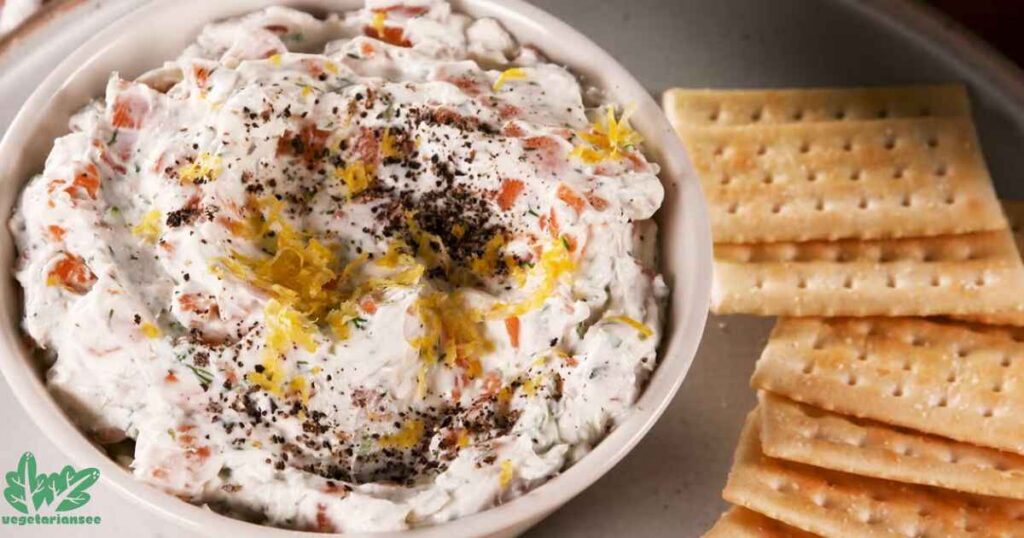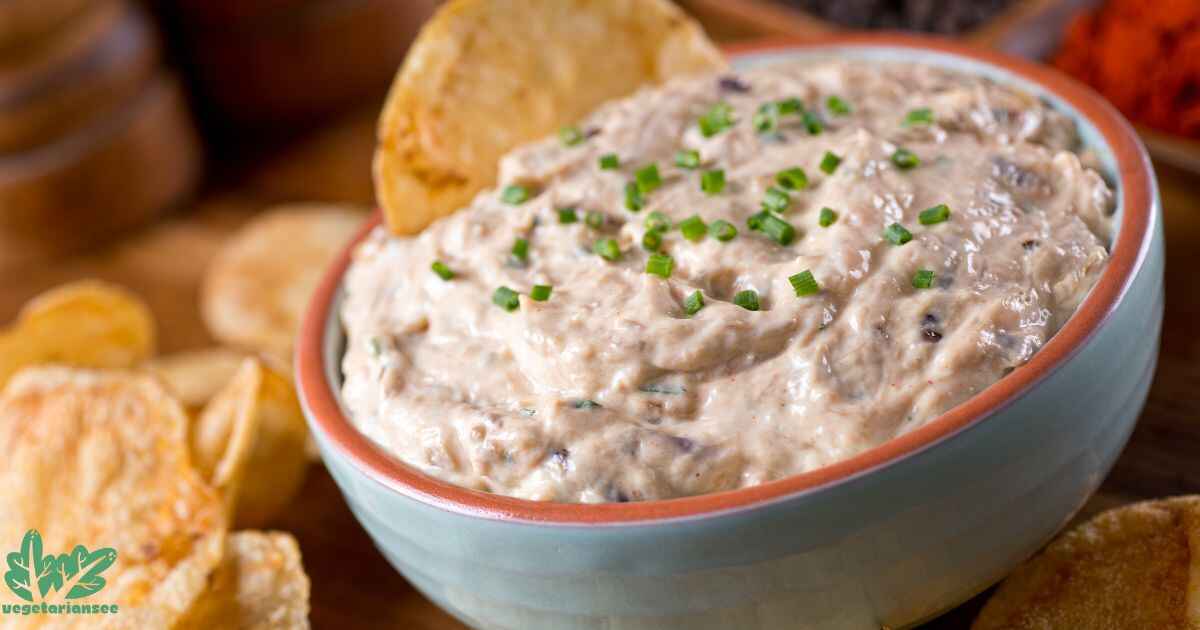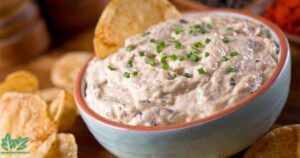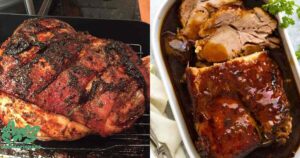Hosting a BBQ often means battling bland appetizers that fail to impress guests. Standard dips become forgettable, blending into the background of typical party spreads.
Most home cooks struggle to create memorable starters that spark conversation and elevate the entire dining experience. Traditional dip recipes lack depth, leaving taste buds wanting more excitement and complexity.
Enter smoked dips—a game-changing technique that transforms ordinary appetizers into extraordinary culinary experiences. By introducing strategic smoking methods, you can infuse rich, complex flavors that turn simple ingredients into show-stopping dishes.
This guide reveals professional techniques to create smoked dips that will make your next BBQ unforgettable, ensuring your appetizers become the star of the meal.
What Are Smoked Dips?

Smoked dips represent a culinary innovation that transforms ordinary appetizers into extraordinary flavor experiences. This technique goes beyond traditional preparation methods, introducing a complex layer of taste that elevates simple ingredients.
Unlike standard dips, smoking infuses deep, rich flavors that tantalize the taste buds and create memorable dining moments. The process involves carefully exposing ingredients to controlled wood smoke, allowing subtle nuances to penetrate every bite.
Home cooks and professional chefs alike have discovered this method can turn basic recipes into gourmet sensations. Since 2020, the trend of smoking dips has gained significant popularity among BBQ enthusiasts and food lovers seeking more dynamic appetizer options.
Understanding Smoke Infusion: The Flavor Transformation
Smoke infusion is a precise culinary art that changes ingredient profiles at a molecular level. Heat and wood particles interact with food components, creating chemical reactions that develop unprecedented depth of flavor.
Professional chefs understand that different wood types produce unique flavor signatures. Hickory delivers bold, intense notes while apple wood provides subtle, sweet undertones.
Temperature control becomes critical during smoking, with most recipes requiring careful regulation between 200-250 degrees Fahrenheit. The smoking process not only enhances taste but also acts as a natural preservation method, extending the dip’s shelf life and improving its overall quality.
The Science Behind Flavor Development
Flavor development during smoking occurs through complex chemical interactions. Proteins, fats, and sugars in ingredients break down and recombine when exposed to controlled heat and smoke.
Phenolic compounds from wood chips penetrate food surfaces, creating those signature smoky notes we crave. Research from food science journals confirms that smoking transforms ingredient structures, releasing new flavor molecules that weren’t present in original ingredients.
This scientific process explains why smoked dips taste fundamentally different from their non-smoked counterparts.
Top 5 Smoked Dip Recipes: A Culinary Journey
Smoking dips represents a revolutionary approach to appetizer preparation. Each recipe offers a unique exploration of flavor, technique, and culinary creativity.
The following collection represents carefully curated methods that transform ordinary ingredients into extraordinary experiences. Chefs and home cooks will discover techniques that unlock hidden flavor potentials in familiar ingredients.
Smoked Salsa: A Crowd-Pleasing Classic
Smoked salsa elevates the traditional Mexican condiment into a sophisticated appetizer. Combining fresh tomatoes, onions, jalapeños, and cilantro, this recipe requires precise smoking techniques.
Chefs begin by selecting ripe, high-quality vegetables that can withstand smoking temperatures. The process involves carefully layering ingredients in a smoker, typically at 225 degrees Fahrenheit for approximately two hours.
Smoking softens vegetable structures while introducing complex smoky undertones that traditional salsa preparation cannot achieve. Cilantro and lime juice provide brightness, balancing the intense smoky flavors. Home cooks can experiment with different wood chips to customize their salsa’s flavor profile.
Smoked French Onion Dip: Elevating a Party Favorite
French onion dip undergoes a remarkable transformation through smoking techniques. Traditional recipes rely on raw ingredients, but smoking introduces unprecedented depth.
Chefs carefully select sweet onions, smoking them at controlled temperatures to develop caramelized, complex flavors. The smoking process typically requires one hour at 225 degrees Fahrenheit, allowing onions to absorb wood-derived nuances.
Combining smoked onions with sour cream, mayonnaise, and herbs creates a sophisticated dip that surpasses standard party appetizers. Thyme and garlic complement the smoky base, creating a multi-layered flavor experience that surprises and delights guests.
Smoked Cheese Ball: A Savory Appetizer Sensation
The smoked cheese ball represents a pinnacle of appetizer innovation. Traditional preparations pale in comparison to this technique’s flavor complexity. Chefs carefully blend butter, cream cheese, and sharp cheddar, creating a base that can withstand smoking temperatures.
The process involves forming a compact ball, then exposing it to low heat around 200 degrees Fahrenheit for one hour. Different wood chips impart unique flavor characteristics, allowing endless variations.
Worcestershire and hot pepper sauces add depth, while flour coating ensures optimal smoke absorption. This method transforms a simple cheese appetizer into a gourmet experience.
Smoked Bean Dip: A Creamy Smoky Delight
Bean dip receives a revolutionary upgrade through smoking techniques. Black beans serve as an ideal canvas for smoke absorption, developing rich, complex flavors.
Chefs combine beans with salsa, onions, and carefully selected spices before introducing them to controlled smoking environments. The 30-minute smoking process at medium-high temperatures allows ingredients to meld while developing deep, smoky undertones.
Olive oil and chili powder enhance the dip’s complexity, creating a sophisticated appetizer that transcends traditional preparations. This method transforms a simple bean dip into a memorable culinary experience.
Smoked Salmon Dip: Seafood with a Smoky Twist
Salmon dip represents the pinnacle of smoked appetizer creativity. Chefs carefully select high-quality cream cheese and smoked salmon, creating a base that promises exceptional flavor.
The smoking process involves delicate temperature control and precise ingredient selection. Red onions, capers, and lemon juice provide brightness that balances the intense smoky salmon notes.
Horseradish adds a subtle heat, while smoked paprika reinforces the dip’s complex flavor profile. Overnight chilling allows flavors to develop fully, ensuring a sophisticated appetizer that impresses even discerning palates.
Smoked Bean Dip: A Creamy Smoky Delight
Selecting the perfect beans transforms a basic dip into a culinary masterpiece. Black beans emerge as the ultimate choice for smoking, offering robust texture and exceptional flavor absorption.
Professional chefs recommend using high-quality, organic beans for maximum taste complexity. Preparation begins with thorough rinsing and careful ingredient selection. Salsa, onions, and precise spice combinations create a foundational flavor profile that elevates the entire dish.
The smoking process requires meticulous attention to temperature and timing. Medium-high heat allows beans to develop deep, smoky undertones without losing their inherent creamy texture.
Olive oil and chili powder introduce additional layers of complexity, ensuring each bite delivers a sophisticated taste experience that challenges traditional appetizer expectations.
Smoked Salmon Dip: Seafood with a Smoky Twist
Salmon dip represents a sophisticated approach to seafood appetizers. Preparation demands precision and high-quality ingredients. Professional chefs select premium smoked salmon as the cornerstone of this exceptional recipe.
Cream cheese provides a rich, smooth base that complements the fish’s intense flavors. The smoking process requires careful temperature control and strategic ingredient selection.
Red onions and capers introduce sharp, bright notes that balance the rich salmon profile. Lemon juice adds a critical acid component, cutting through the dip’s richness. Horseradish provides a subtle heat that awakens the palate.
Smoked paprika reinforces the smoky essence, creating a multidimensional flavor experience that transforms an ordinary appetizer into a gourmet sensation.
Advanced Smoking Techniques for Dips
Smoking dips represents a complex culinary art form that demands technical expertise and creative vision. Professional chefs understand that successful smoking requires more than basic technique—it demands a deep understanding of flavor science and ingredient interactions.
Choosing the Right Wood Chips
Wood chip selection represents the secret weapon of exceptional smoked dips. Each wood variety introduces unique flavor characteristics that dramatically transform ingredient profiles. Hickory delivers bold, intense notes that complement robust ingredients like beef and strong cheeses.
Apple wood provides subtle, sweet undertones perfect for delicate recipes. Mesquite offers an aggressive flavor ideal for southwestern-inspired dips. Chefs recommend experimenting with wood chip combinations to discover unexpected flavor symphonies.
Professional smoking requires understanding how different woods interact with specific ingredients. Temperature control becomes critical, with most recipes demanding precise heat management between 200-250 degrees Fahrenheit.
Temperature and Timing
Smoking temperatures determine the success of any dip recipe. Professional chefs understand that precise heat control transforms ordinary ingredients into extraordinary experiences. Most dips require carefully regulated temperatures between 200-250 degrees Fahrenheit.
Timing becomes equally critical, with different ingredients demanding unique smoking durations. Vegetables typically require 30-60 minutes, while cheese-based dips need shorter exposure.
Experienced chefs recommend using digital thermometers to maintain consistent temperatures. Overcooking can destroy delicate flavor profiles, while insufficient smoking fails to develop complex taste notes.
The goal involves creating a balanced smoke infusion that enhances rather than overwhelms the original ingredients.
Serving and Pairing Smoked Dips
Presentation elevates smoked dips from simple appetizers to culinary experiences. Thoughtful serving transforms ordinary gatherings into memorable culinary events.
Accompaniments and Serving Suggestions
Selecting the perfect accompaniments becomes an art form for smoked dip enthusiasts. Tortilla chips remain the classic choice, but adventurous hosts explore diverse options.
Vegetable crudités offer a health-conscious alternative, with cauliflower and snap peas providing excellent dipping surfaces. Artisan crackers introduce textural complexity that complements smoky flavor profiles.
Presentation matters as much as taste, with strategic plating creating visual appeal. Professional chefs recommend using contrasting serving dishes that highlight the dip’s rich color and texture.
Garnishes like fresh herbs or strategically placed vegetables can transform a simple appetizer into a stunning culinary centerpiece.
Creative Uses for Leftover Smoked Dips
Leftover smoked dips represent culinary opportunities, not waste. Creative chefs transform remnants into entirely new dishes. Mac and cheese receives a flavor boost when mixed with smoky dip remnants.
Scrambled eggs become gourmet experiences with strategic dip additions. Roasted vegetables gain complexity when topped with leftover smoky preparations. Freezing and cubing smoked dips creates unique breading opportunities for creative appetizers.
Home cooks can develop nachos, stuff peppers, or use as sandwich spreads. Proper storage extends dip life, with meat-based versions lasting five days and vegetarian options maintaining quality for two weeks. Innovative repurposing ensures no delicious flavor goes to waste.
Equipment and Tools
Smoking dips requires specialized equipment that transforms culinary enthusiasts into professional-level chefs. The right tools can make the difference between an average appetizer and a memorable dining experience.
Smokers for Dip Preparation
Selecting the perfect smoker becomes a critical decision for aspiring dip masters. Electric smokers emerge as the most beginner-friendly option, offering precise temperature control and consistent results.
Pellet smokers provide versatility, allowing users to experiment with various wood flavors effortlessly. Charcoal smokers remain a favorite among traditionalists, delivering intense smoky characteristics that purists crave.
Budget-conscious home cooks can find quality options starting around $150, with professional-grade models reaching $500 and beyond. Bradley and Traeger represent top brands in the smoking world, each offering unique features for dip preparation.
The 2023 market showcases innovative models with digital controls, smartphone connectivity, and multiple cooking zones, making smoking more accessible than ever before.
Read This Blog: The Ultimate Savory Cottage Cheese Bowl: A Complete Guide
Essential Accessories
Professional dip smoking requires more than just a smoker. Specialized accessories elevate the entire preparation process. High-quality stainless steel smoking pans become crucial for even heat distribution.
Disposable aluminum pans offer convenient alternatives for casual cooks. Digital instant-read thermometers represent a game-changing tool, ensuring precise temperature control critical for perfect dips.
Silicone-tipped tongs and heat-resistant gloves protect chefs during the smoking process. Specialty smoking racks allow multiple dip preparations simultaneously.
Professional-grade temperature probes with wireless connectivity have revolutionized home smoking techniques since 2021. Moisture-control containers and specialized smoking mats provide additional options for creative dip enthusiasts seeking ultimate flavor control.
Health and Nutrition
Culinary innovation meets nutritional awareness in the world of smoked dips. Modern cooking demands a balance between flavor and health-conscious preparation.
Also Read This Blog: The Ultimate Savory Cottage Cheese Bowl: A Complete Guide
Nutritional Considerations
Smoked dips challenge traditional notions of healthy appetizers. Careful ingredient selection can transform these flavor-packed treats into nutritionally balanced options. A typical smoked salsa contains approximately 30-40 calories per serving, significantly lower than cream-based alternatives.
Protein-rich options like smoked bean dip offer substantial nutritional benefits. Health-conscious cooks can reduce calorie content by substituting full-fat dairy with Greek yogurt or low-fat alternatives.
Vegetable-based dips provide essential nutrients and fiber. Sodium management becomes critical, with professionals recommending reduced-salt variations.
Gluten-free and vegan adaptations have gained popularity since 2022, allowing more dietary inclusivity. Strategic ingredient swaps can reduce calories by 30-50% without compromising flavor complexity.
Troubleshooting and Tips
Mastering smoked dips requires understanding potential challenges and developing expert-level techniques.
Common Smoking Mistakes
Smoking dips presents unique challenges that can frustrate even experienced home cooks. Over-smoking remains the most common pitfall, where excessive wood exposure destroys delicate flavor profiles.
Professional chefs recommend starting with mild wood chips and gradually increasing intensity. Moisture control becomes critical, with too much liquid causing uneven smoking and potential flavor dilution.
Temperature fluctuations can completely ruin a carefully prepared dip. Experts suggest using digital thermometers and avoiding frequent smoker opening. Flavor balancing requires understanding how different ingredients interact with smoke.
Some components absorb smoke more quickly than others. The 2023 smoking community emphasizes the importance of small-batch testing and careful ingredient selection. Patience and precise control separate amateur attempts from professional-quality smoked dips.
| Common Smoking Mistake | Solution | Impact |
| Over-smoking | Use mild wood chips | Preserves ingredient flavor |
| Temperature inconsistency | Digital thermometer | Ensures even cooking |
| Excessive moisture | Drain ingredients | Improves smoke penetration |
| Unbalanced flavors | Gradual wood chip introduction | Enhances flavor complexity |
Frequently Asked Question
How long can smoked dips be stored?
Storage duration varies by ingredients. Meat-based smoked dips remain safe for five days when refrigerated properly. Vegetarian dips using Velveeta can last up to two weeks. Cream cheese-based versions should be consumed within one week. Proper storage requires airtight containers and consistent refrigeration below 40 degrees Fahrenheit. Always check for signs of spoilage like unusual odors or color changes before consuming. Professional chefs recommend labeling containers with preparation dates to track freshness accurately.
Can I smoke dips without a dedicated smoker?
Alternative smoking methods exist for home cooks. Stovetop smoking using a heavy-bottomed pan with wood chips works effectively. Oven-based techniques with wood chip packets can simulate smoking processes. Outdoor grill setups with indirect heat and wood chip boxes provide additional options. Liquid smoke represents a quick alternative for those without specialized equipment. Each method requires careful temperature control and ingredient preparation to achieve authentic smoky flavors.
What are the best woods for smoking dips?
Wood selection dramatically impacts dip flavor profiles. Hickory delivers bold, intense notes perfect for robust ingredients. Apple wood provides subtle, sweet undertones ideal for delicate recipes. Mesquite offers aggressive flavors excellent for southwestern-style dips. Oak creates a balanced, medium-intensity smoke suitable for most recipes. Professionals recommend experimenting with wood chip combinations to discover unique flavor experiences. Start with mild woods and gradually increase intensity based on personal preference.
How do I prevent dips from becoming too smoky?
Preventing over-smoking requires careful technique and ingredient understanding. Start with minimal wood chip quantities and short smoking times. Use milder wood varieties like apple or cherry for first attempts. Monitor temperature closely to avoid intense smoke exposure. Remove dips from smoker immediately after desired flavor develops. Taste-test during smoking process to gauge flavor intensity. Professional chefs recommend practicing with small batches to understand individual ingredient smoke absorption rates.
Can I make vegetarian smoked dips?
Vegetarian smoking options offer exciting culinary possibilities. Plant-based ingredients like beans, vegetables, and dairy alternatives smoke beautifully. Tofu, tempeh, and nutritional yeast provide protein-rich smoking opportunities. Cream cheese substitutes and cashew-based creams work wonderfully in vegetarian dip recipes. Smoking techniques remain identical to traditional methods. Vegetables like bell peppers, onions, and tomatoes develop incredible depth through smoking. Experiment with different plant-based ingredients to create unique flavor combinations.
Conclusion
Smoked dips represent a culinary revolution that transforms ordinary appetizers into extraordinary experiences. Home cooks and professional chefs alike can unlock incredible flavor potential through strategic smoking techniques. Understanding wood selection, temperature control, and ingredient interactions becomes the key to creating memorable dishes. Each recipe offers a unique journey of taste and creativity. The art of smoking dips extends beyond mere cooking—it’s about crafting memorable moments that bring people together. Embrace experimentation, trust your palate, and enjoy the delicious world of smoked dips.

Ethan Henry with 8 years of expertise in bamboo, excels in sustainable design, construction and product development. His passion for eco-friendly solutions has driven innovative advancements in bamboo-based industries.











